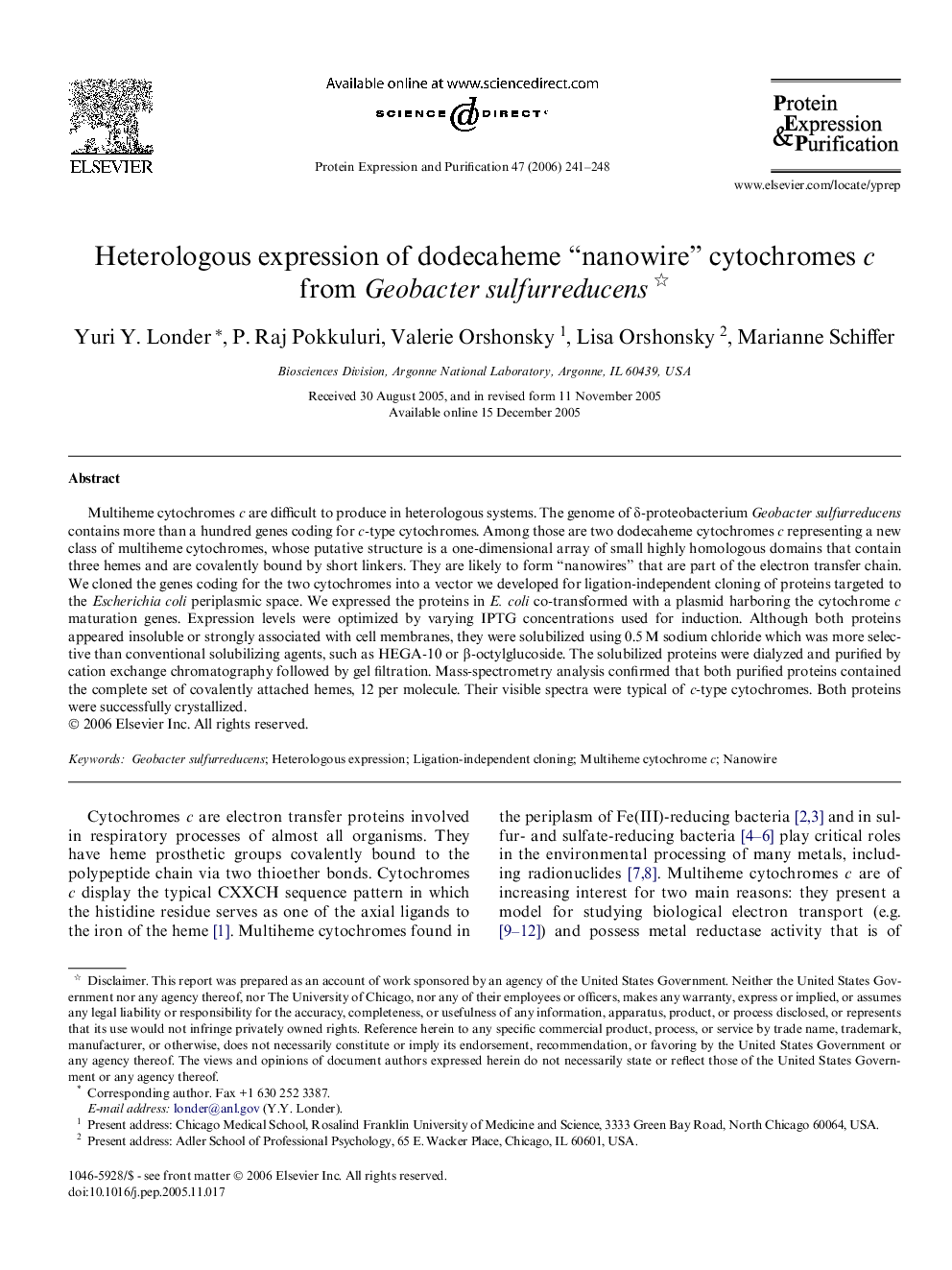| Article ID | Journal | Published Year | Pages | File Type |
|---|---|---|---|---|
| 2021849 | Protein Expression and Purification | 2006 | 8 Pages |
Multiheme cytochromes c are difficult to produce in heterologous systems. The genome of δ-proteobacterium Geobacter sulfurreducens contains more than a hundred genes coding for c-type cytochromes. Among those are two dodecaheme cytochromes c representing a new class of multiheme cytochromes, whose putative structure is a one-dimensional array of small highly homologous domains that contain three hemes and are covalently bound by short linkers. They are likely to form “nanowires” that are part of the electron transfer chain. We cloned the genes coding for the two cytochromes into a vector we developed for ligation-independent cloning of proteins targeted to the Escherichia coli periplasmic space. We expressed the proteins in E. coli co-transformed with a plasmid harboring the cytochrome c maturation genes. Expression levels were optimized by varying IPTG concentrations used for induction. Although both proteins appeared insoluble or strongly associated with cell membranes, they were solubilized using 0.5 M sodium chloride which was more selective than conventional solubilizing agents, such as HEGA-10 or β-octylglucoside. The solubilized proteins were dialyzed and purified by cation exchange chromatography followed by gel filtration. Mass-spectrometry analysis confirmed that both purified proteins contained the complete set of covalently attached hemes, 12 per molecule. Their visible spectra were typical of c-type cytochromes. Both proteins were successfully crystallized.
